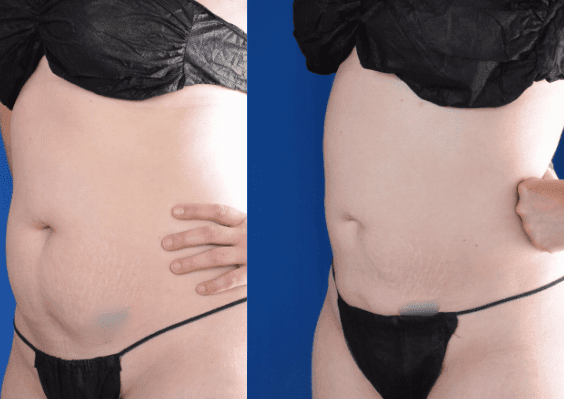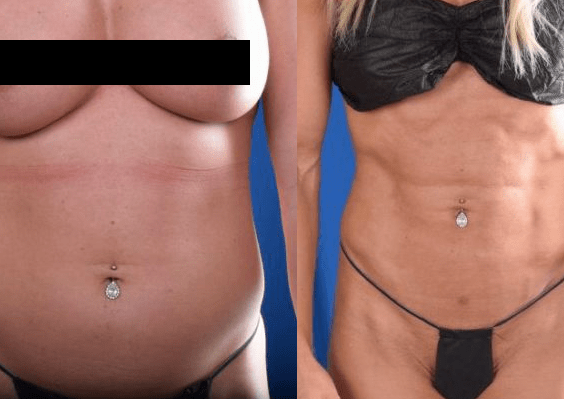Safety Measures and Expert Insights
The Brazilian Butt Lift (BBL) procedure has gained significant popularity in recent years, fueled by its promise of enhancing the curves and contours of the buttocks. However, concerns about its safety, particularly the mortality rate associated with the surgery, have sparked substantial debate. In response, leading organizations such as the American Society of Plastic Surgeons (ASPS), the American Society for Aesthetic Plastic Surgery, and the International Society of Aesthetic Plastic Surgery have taken decisive action. In 2018, they formed the Task Force for Safety in Gluteal Fat Grafting, aimed at developing comprehensive safety guidelines to address these concerns.
The team at Advanced Body Sculpting Institute (ABS) applauds and supports these methods and continues to emphasize the importance of prioritizing patient safety in BBL procedures. We are proud to offer BBL procedures to patients in Denver, CO with outstanding results. As liposuction specialists, we have the skill and training that set us apart. The well-being of our patients is of utmost importance. By choosing qualified and experienced plastic surgeons who prioritize patient safety and adhering to the recommended safety guidelines, individuals considering a BBL can have confidence in the procedure’s potential for satisfactory outcomes and minimized risks. Call 303-708-8770 to learn more, or schedule your consultation online.
For individuals who prioritize staying well-informed, we recommend reading our blog; we offer insights and information from surgeons you can trust.
Myth #1: BBLs Have High Mortality Rates
Concerns have been raised about the safety of injecting techniques employed by surgeons. However, it is crucial to examine the facts and dispel any misconceptions surrounding these concerns.
In the past, there have been instances where improper injecting techniques led to severe complications, including pulmonary fat embolism (PFE), which is the unintentional injection of fat into blood vessels that can potentially lead to fatal outcomes.
The impact of the task force’s guidelines on the medical community has been remarkable. In the two years following the publication of the recommendations, there has been a significant decrease in the incidence of any PFE. [1] These encouraging figures demonstrate the effectiveness of implementing the recommended safety guidelines.
In 1996, when the procedure’s name emerged after a segment on TLC, some surgeons were engaging in unsafe practices, which have now been addressed thanks to the task force and safe practices like our Advanced Body Sculpting team. These include [1]:
- Avoiding injecting fat into the deep muscle layers. A reported 13.1% were injecting in this manner in 2017, which is now less than 1%. This shift signifies a significant improvement in practicing safe injecting techniques, aligning with the guidelines’ recommendations.
- Using larger cannulas during the procedure. In that same survey, 29.8% of respondents reported using cannulas with a larger diameter of about 4.1 mm, compared to only 4.1% in 2017.
- Another notable change is the technique of angling the cannula during the procedure. In the current survey, only 4% of respondents reported angling the cannula, in contrast to 27.2% in 2017.
We are pleased to see these changes as they align with our commitment to safety at the Advanced Body Sculpting Institute. Our team of highly skilled surgeons understands the importance of following safe practices to ensure optimal patient outcomes.
Myth #2: The Anatomy of the Buttock is Insignificant
A thorough understanding of the anatomy of the buttock is crucial for plastic surgeons performing BBL procedures. By comprehending the intricate structures and potential risks associated with this area, our team ensures safety and minimizes the chances of complications.
Gluteal Muscles
As mentioned, surgeons must be cautious not to inject fat directly into or damage these muscles during a BBL. Injecting fat into the muscle can increase the risk of fat embolism and other serious complications. Instead, we focus on targeting the subcutaneous fat layer to achieve desired results while minimizing risks.
The Vascular Anatomy of the Buttocks
Understanding the intricate network of blood vessels in the buttock region is crucial for patient safety during a BBL. The gluteal region has an abundant blood supply, including the superior and inferior gluteal arteries. Surgeons must be meticulous in avoiding injury to these vessels to prevent excessive bleeding and to avoid fat entering the larger vessels, which lead to the heart.
Buttock Nerve Anatomy
The buttock region also houses important nerves, such as the sciatic nerve, which provides sensory and motor function to the lower extremities. Surgeons need to be cognizant of the nerve pathways and take precautions to avoid injury. Damaging or compressing the nerves can lead to pain and numbness.
The Skin and Soft Tissue of the Buttock
The BBL is, unfortunately, not a lift, which means the quality and elasticity of the skin in the buttock area are crucial factors to consider. Surgeons must evaluate the patient’s skin tone and elasticity to determine the appropriate amount of fat to be injected. Insufficient skin elasticity can lead to sagging or poor aesthetic outcomes. We take our time during the consultation to assess the skin’s ability to accommodate the additional volume from the fat grafting and ensure it can retain its shape and contour.
Myth #3: Surgeon Expertise Doesn’t Matter
Just because you can, doesn’t mean you should. In fact, when it comes to a procedure like BBL, being a liposuction specialist sets your results apart. Liposuction specialists have a deep understanding of the nuances of fat removal, including
- Proper fat harvesting
- Preservation
- Purification
We can selectively target specific areas to enhance body proportions and achieve a balanced and pleasing silhouette. This expertise is vital in creating natural-looking results and avoiding complications such as uneven contouring or fat necrosis.
Our liposuction specialists undergo extensive training and education specifically focused on liposuction techniques. We have acquired in-depth knowledge of the intricacies of fat removal, including different liposuction methods, patient assessment, body contouring, and safety protocols. This specialized training equips us with the expertise to perform liposuction procedures effectively and safely.
It goes without saying that if performed by an unqualified surgeon, the procedure may be executed improperly, leading to an increased risk of complications or worse. In fact, regardless of whether you come to Advanced Body Sculpting Institute for your BBL or elsewhere, we encourage you to use this guide to interview your surgeon about their techniques, instrumentation, and how many BBL they have performed. Even with the task force’s guidelines in place, choosing a “cheaper” surgeon who doesn’t adhere to them could cost you. In fact, between 2010 and 2022, South Florida witnessed 25 unfortunate cases of BBL-related fat emboli deaths. Fourteen of these tragic incidents occurred after the guidelines and implementation of a “subcutaneous-only” rule by the 2019 Florida Board of Medicine. [2]
Myth #4: BBL Guarantees Permanent Results
While a BBL can provide long-lasting results, it does not guarantee permanent outcomes. The survival of transferred fat cells depends on various factors, including the surgeon’s skill & technique, the patient’s lifestyle, and their body’s natural processes. Over time, a certain percentage of the transferred fat may be naturally reabsorbed by the body.
This is another area where choosing fat transfer specialists benefits patients. We use specialized cannulas for patient safety and to reduce the risk of cellular rupture.
Furthermore, because the survival of fat grafts largely depends on preserving a significant portion of intact mature adipocytes and mesenchymal stem cells within the stromal component, our primary objective of postharvest processing is to eliminate unwanted contaminants. Studies have found that the presence of red blood cells and other mixed components can speed up the breakdown of the transplanted fat. [3]
Why ABS for Fat Grafting
The surgeons at ABS are fat grafting experts. We bring almost 20 years of experience in both the development of advanced techniques and technologies. We have been teaching these techniques of fat grafting to hundreds of surgeons over the last two decades. We use the latest technologies such as the Well’s Johnson HVP system which maximizes the survival of fat grafts. This largely depends on preserving a significant portion of intact mature adipocytes and mesenchymal stem cells within the stromal component by the only two mechanisms proven to do this in the plastic surgery literature:
1. Reduction of “Shear Stress” on the intact mature adipocytes and mesenchymal stem cells, and 2. Perhaps the most important mechanism, this significantly reduces the time the cells are outside of the body after they have been harvested before re-injection.
We have developed specialized atraumatic cannulas that not only further reduce the trauma to the intact mature adipocytes and mesenchymal stem cells, but that same technology is used to reinject these cells with the intention of minimizing damage to the surrounding structures where the intact mature adipocytes and mesenchymal stem cells are re-injected.
During the procedure, a skilled ABS surgeon carefully injects small amounts of fat grafts into the buttock area. The fat is distributed in a crosshatch pattern and placed at different depths to cover a larger surface area and avoid excessive pressure at any one point, which the Wells’ Johnson re-injection device monitors. Ultrasound imaging is used to confirm where the cells can be safely re-injected. Multiple tunnels are created during injection, and the fat is only injected as the cannula is withdrawn, allowing it to settle naturally.
Your BBL Recovery
Your specific recovery practices play a crucial role in shaping the final outcome of your procedure. Following the postoperative instructions provided by your surgeon is essential for ensuring optimal healing and enhancing the longevity of your results. This may involve wearing compression garments as recommended, avoiding sitting or lying directly on your buttocks for the specified duration, and maintaining a healthy lifestyle with proper nutrition and exercise. By adhering to these guidelines and taking care of yourself during the recovery period, you can contribute to the success of your BBL and enjoy the best possible aesthetic outcome.
Myth #5: BBL is an Affordable Procedure for Everyone
One common myth surrounding the cost of a BLL is that it is an affordable procedure accessible to everyone. In reality, the cost of a BBL can vary significantly depending on various factors such as the surgeon’s expertise, geographic location, facility fees, anesthesia, and other associated expenses.
While cost is an important consideration, it is crucial to prioritize safety, experience, and quality of care when selecting a surgeon rather than solely focusing on finding the cheapest option. It is essential to consult with a qualified plastic surgeon who can provide a personalized assessment and discuss the specific costs associated with the procedure.
Your Denver Brazilian Butt Lift Liposuction Specialist
Schedule your consultation with a Denver liposuction specialist at ABS to receive the best care and results that will last. Call (303) 708-8770 today!
References
- Luis Rios, Jr, MD , Varun Gupta, MD, MPH, Improvement in Brazilian Butt Lift (BBL) Safety With the Current Recommendations from ASERF, ASAPS, and ISAPS, Aesthetic Surgery Journal, Volume 40, Issue 8, August 2020, Pages 864–870, https://doi.org/10.1093/asj/sjaa098
- Pazmiño P, Garcia O. Brazilian Butt Lift–Associated Mortality: The South Florida Experience. Aesthetic Surgery Journal. Published online August 11, 2022. https://doi.org/10.1093/asj/sjac224
- Crawford, J. Lauren M.D.; Hubbard, Bradley A. M.D.; Colbert, Stephen H. M.D.; Puckett, Charles L. M.D.. Fine Tuning Lipoaspirate Viability for Fat Grafting. Plastic and Reconstructive Surgery 126(4):p 1342-1348, October 2010. | DOI: 10.1097/PRS.0b013e3181ea44a9





